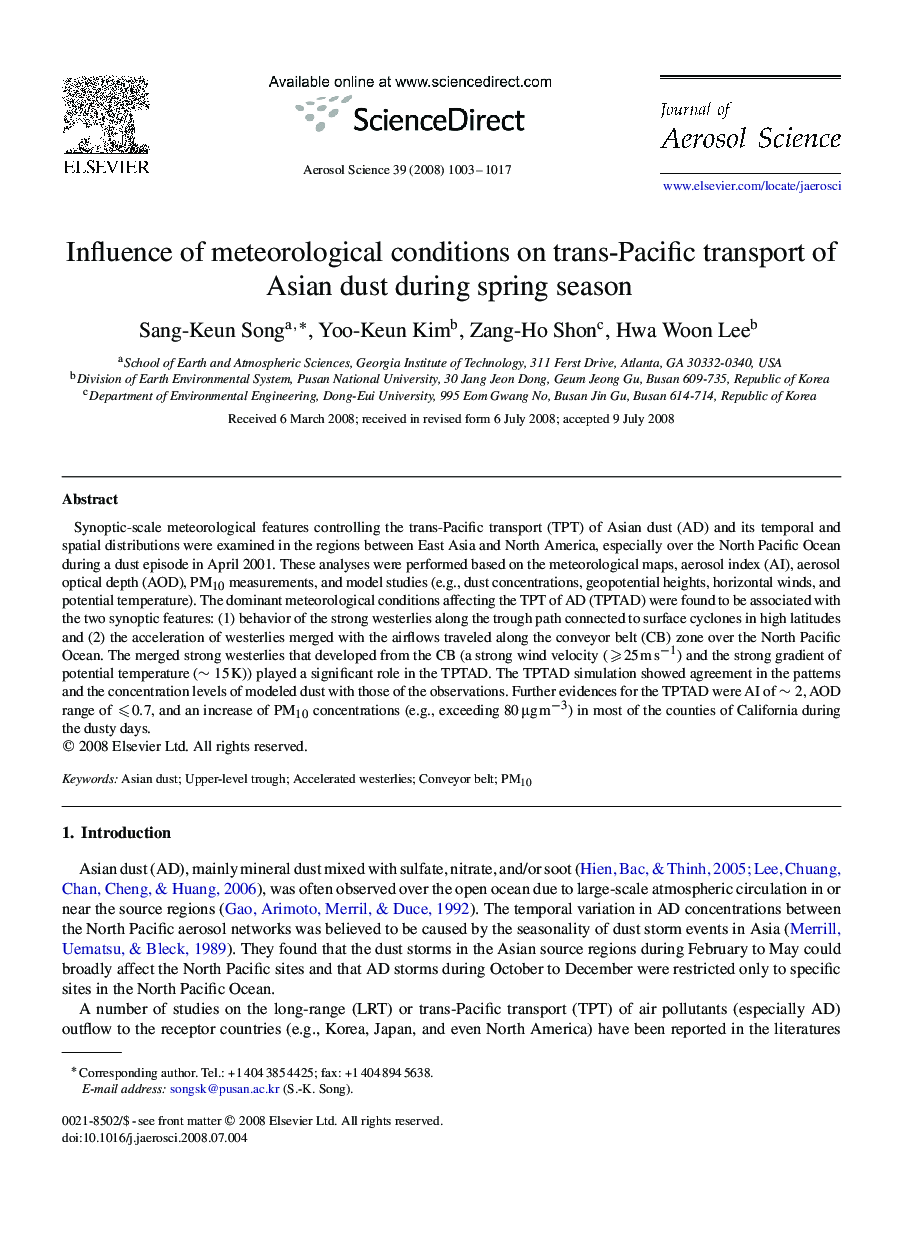| Article ID | Journal | Published Year | Pages | File Type |
|---|---|---|---|---|
| 4453042 | Journal of Aerosol Science | 2008 | 15 Pages |
Synoptic-scale meteorological features controlling the trans-Pacific transport (TPT) of Asian dust (AD) and its temporal and spatial distributions were examined in the regions between East Asia and North America, especially over the North Pacific Ocean during a dust episode in April 2001. These analyses were performed based on the meteorological maps, aerosol index (AI), aerosol optical depth (AOD), PM10 measurements, and model studies (e.g., dust concentrations, geopotential heights, horizontal winds, and potential temperature). The dominant meteorological conditions affecting the TPT of AD (TPTAD) were found to be associated with the two synoptic features: (1) behavior of the strong westerlies along the trough path connected to surface cyclones in high latitudes and (2) the acceleration of westerlies merged with the airflows traveled along the conveyor belt (CB) zone over the North Pacific Ocean. The merged strong westerlies that developed from the CB (a strong wind velocity (⩾25ms-1) and the strong gradient of potential temperature (∼15K)) played a significant role in the TPTAD. The TPTAD simulation showed agreement in the patterns and the concentration levels of modeled dust with those of the observations. Further evidences for the TPTAD were AI of ∼2∼2, AOD range of ⩽0.7⩽0.7, and an increase of PM10 concentrations (e.g., exceeding 80μgm-3) in most of the counties of California during the dusty days.
